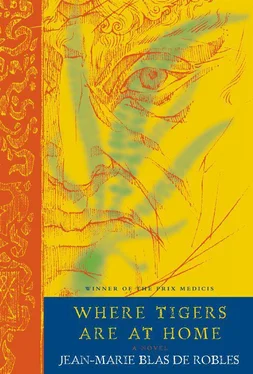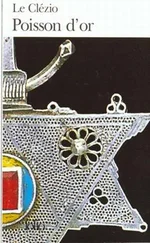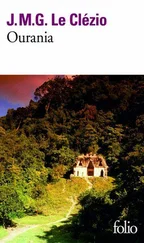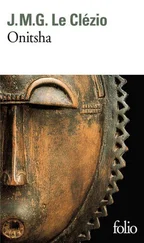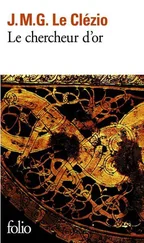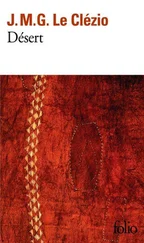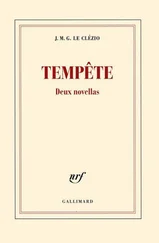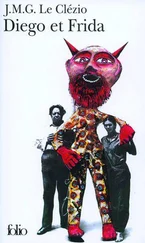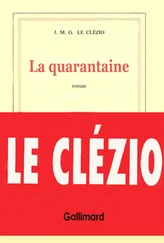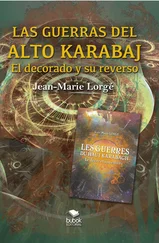When I came to, several hours later, I was lying in my bed in the Roman College with both legs fractured in several places & numerous bruises. The tormented expression on Kircher’s face told me that coming to my senses was more of a resurrection than a simple awakening.
When I was fully conscious again, my first words were to express my concern about the Cardinal’s reaction and to apologize to Kircher for a failure that would do such damage to his reputation. It was not the machine that was at fault, but the weakness of my constitution & the panic that had paralyzed me, thus ruining the hopes founded on this project; I was unworthy of the trust my master had placed in me & I could not forgive myself for the boastfulness with which I had claimed a role so obviously beyond my modest powers, & to tell the truth it would have been better had I perished during my fall as a just punishment for my sin of pride …
Kircher would not let me go on: I was wrong about everything, since the project, far from being a setback, had succeeded beyond his wildest hopes. After expressing their natural concern about my fate, his guests had commended my exploit. A body thrown from the ramparts of Castel Sant’Angelo would have fallen straight down & crashed into the moat, while the artificial wings had allowed me to make progress through the air & reach the Tiber. So flight had been achieved, thus proving that man could rival the eagles; all that remained was to add certain improvements to the machine & train future pilots sufficiently. The problem was no longer one of physics, but of technology, & the human mind had always shown its skill in surmounting problems of that order. The years to come would see to it that they perfected what had been merely sketched out in this experiment: one day we would fly as far, as high & as swiftly as the most agile birds of prey. And I was the one who, through my courage & my faith, had procured this certainty for our century … Moreover, Cardinal Barberini had sent his personal physician to care for me &, combining charity with generosity, proposed to continue to fund from his own purse the flight trials with prisoners who had been condemned to death, thus offering those poor wretches an unhoped-for opportunity of saving their lives.
These comforting words gave me the strength & the patience to endure being confined to my bed. Monsieur Poussin came to see me several times, bringing me albums of sketches or prints, & we spent many pleasant hours chatting about painting. The Cardinal himself once did me the honor of coming to see me. He repeated word for word what Kircher had told me & congratulated me again on my bravery and selflessness. As for my master, he came to see me as often as his numerous occupations would allow. Nothing that would make my life pleasant was too much for him: he read to me, told me stories about China or the Indians of Maranhão & kept me informed about his progress in deciphering the hieroglyphics. He even went so far as to invent an unusual musical instrument with the sole aim of amusing me.
Thus it was that one fine morning, toward the end of my convalescence, I was taken from my room to the Great Hall of the College. All the fathers & their students were gathered there & I was greeted with an ovation worthy of a person of consequence. It was only after I had settled down on a sofa that I noticed the imposing organ case that had been brought into the hall. Oddly enough, no pipes could be seen jutting out above the case, which was elaborately decorated with rustic scenes. Kircher sat down at the console and played a lively air by our old friend Girolamo Frescobaldi: the sound that came from the organ was that of a harpsichord & I was wondering why such a sizeable piece of furniture was necessary to house a mechanism that was, after all, not particularly bulky, when my master, with an amused look on his face, announced, “And now the same composition, but using the bioharmonic pedals!”
His feet immediately started flying over the pedals &, to general hilarity, produced the strangest concert of caterwauling that had ever been heard. Even stranger was the fact that this arrangement of animal cries reproduced the graceful air he had previously played; it was perfectly recognizable, including the most subtle harmonies. Like all my colleagues in the hall, I was enraptured.
Once Athanasius had finished there were many who wanted to try this instrument, the fruit of my master’s inexhaustible genius. Each piece that was played produced new comic effects & nothing was more hilarious than to play in the upper registers. Afterward Kircher showed us some compositions of his own, asking Johann Jakob Froberger, the most gifted musican among us, to play them on the harpsichord.
Even in this simple amusement, Kircher had employed all his knowledge & skill. Once opened, the organ case revealed an exceedingly complex mechanism. When one of the pedals was depressed, an excellent transmission system operated a kind of hammer that suddenly came down on the tail of a cat strapped to a wooden plate. All the cats making up the two octaves of this instrument had been carefully selected by Athanasius for their natural ability to meow on a certain note. They were enclosed in little boxes, which only allowed their tails to stick out, & even if they did not seem particularly happy at the treatment to which they were subjected, they played their part perfectly.
If I had not already been well on the way to a complete recovery, such a concert would have cured me, I believe, as effectively as a tarantella!
I resumed my studies with gusto & toward the end of 1643 Kircher published his Lingua Aegyptica Restituita . This book of six hundred and seventy-two pages contained, apart from the Arabic-Coptic dictionary brought back many years ago by Pietro della Valle, a complete grammar of that language & confirmation of the thesis put forward in his Prodomus Copticus : namely that the hieroglyphs were the symbolic expression of Egyptian wisdom, the priests having refused to use the common language, that is Coptic, to express their most sacred dogmas …
Kircher now had no doubts that he had mastered the hieroglyphs. He did not provide the key to them in this publication, but acknowledged that he had advanced toward it thanks to the assistance of a mysterious corespondent, to whom he dedicated the book, as he also did to all Arab and Egyptian scholars, the sole heirs to & possessors of the ancient language.
The year 1644 was decisive. After the death of Pope Urban VIII, Cardinal Pamphilius succeeded him under the name of Innocent X. To celebrate his election, this worthy son of an illustrious family, whose palace had since the fifteenth century been in the Circus Agonalis, the former Stadium of Domitian, decided to complete the restoration of that place & to make it a memorial to his family & to his name. To that end he commissioned the famous Lorenzo Bernini to design a fountain, the center of which would be the great obelisk that had been lying along the Appian Way since time immemorial.
Our Superior General, Father Vincent Caraffa, had taken it upon himself to inform the Pope of Kircher’s learning & it was naturally to him the Supreme Pontiff turned to design this project.
“Reverend Father,” the Pope had said during their interview, “we have decided to erect a very tall obelisk & it will be your task to study the hieroglyphs carved on it. We would like you, who have inherited so many talents from God, to give yourself heart & soul to this task, doing everything in your power to ensure that those who are amazed at the scale of this project, will come to understand, through your agency, the secret signification of the inscriptions. In addition, you will guide the architect, Bernini, in the choice of symbols that will be the theme of this fountain, taking care to see that the work is carried out with the appropriate spiritual rigor. May God go with you.”
Читать дальше
